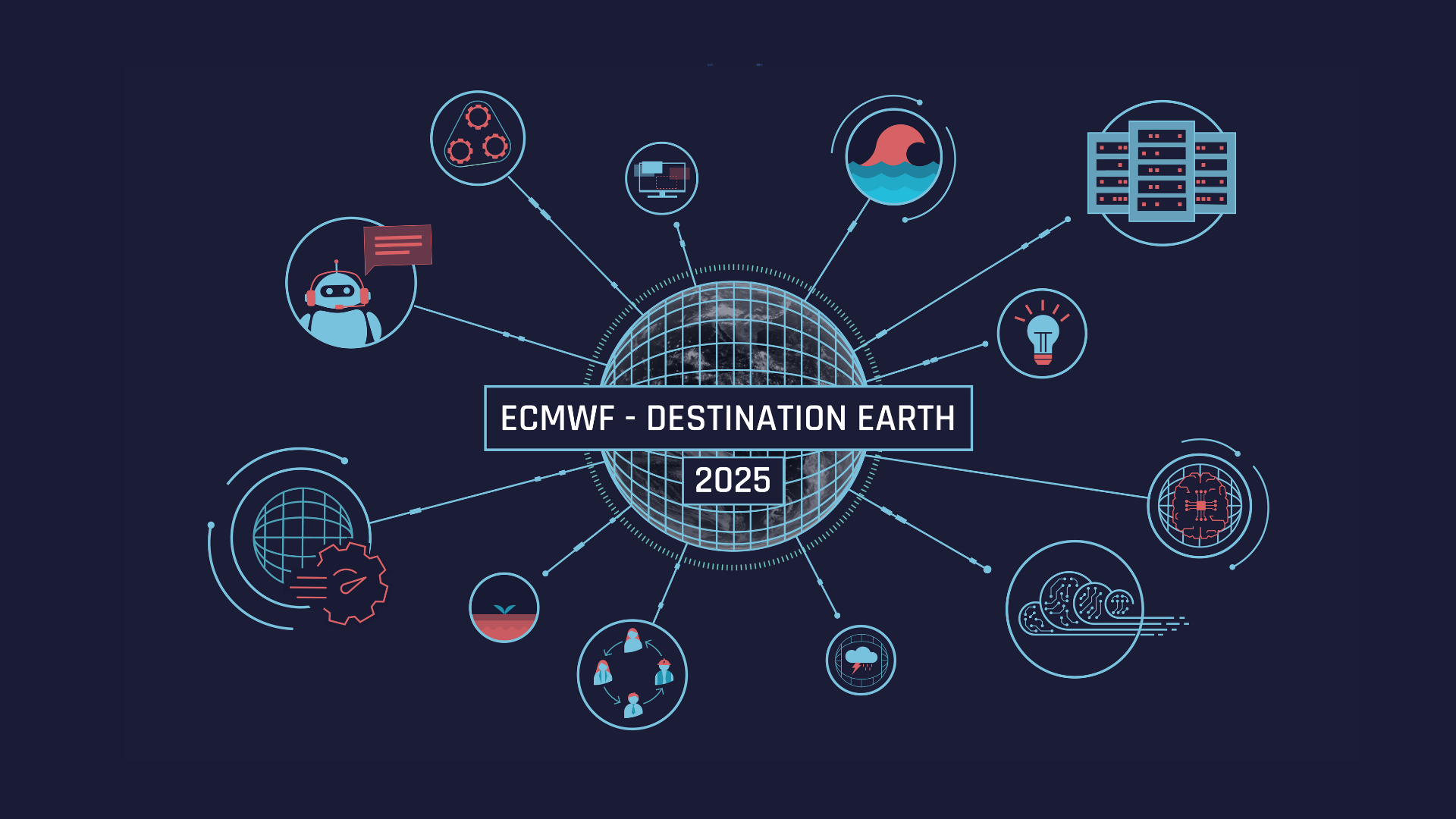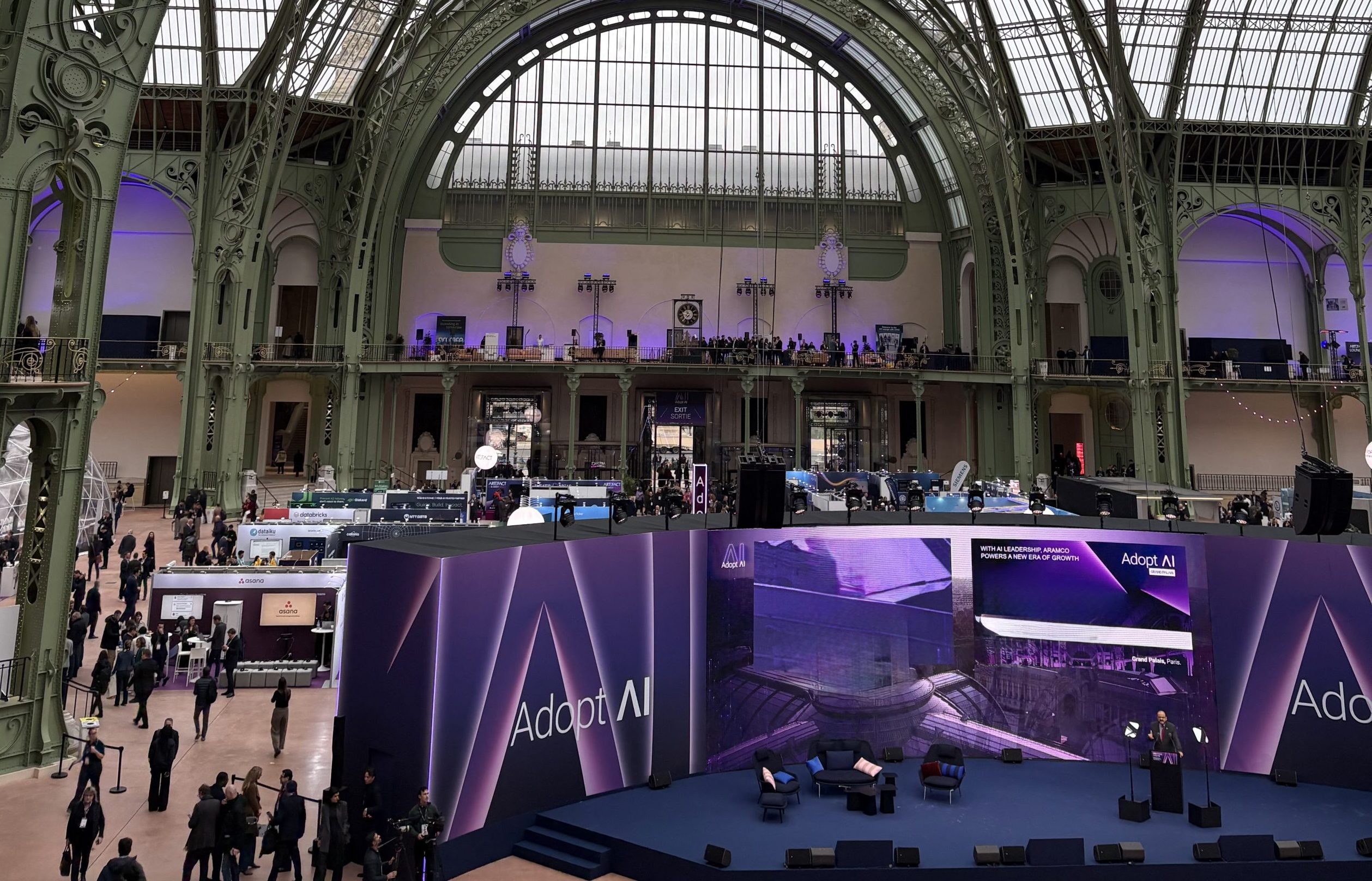
After winning two HPCwire Readers’ Choice Awards last year, the Climate Change Adaptation Digital Twin, part of the European Commission’s Destination Earth (DestinE) initiative, has been shortlisted for the Association for Computing Machinery (ACM) Gordon Bell Prize for Climate Modelling, one of the most prestigious awards in high-performance computing.
Enabled by the DestinE vision, Europe’s world-class EuroHPC supercomputers, and a strong collaborative effort across the continent, the Climate DT is operationalising multi-decadal climate projections at kilometre scales, delivering globally consistent climate information at scales where the impacts of climate change and extreme events are observed.
The Climate DT is implemented by CSC – IT Center for Science in partnership with supercomputing centres, climate centres, national meteorological services, and academia across Europe, in close collaboration with the European Centre for Medium-Range Weather Forecasts (ECMWF), who is responsible for the implementation of DestinE’s Climate Digital Twin and Digital Twin Engine. The Climate DT implements an operational framework that regularly produces global multi-decadal climate projections at 5–10 km resolution while supporting what-if scenario simulations. Storyline simulations, for example, replay past events to explore how they might unfold in a world 2 °C warmer.
Global 5km resolution climate simulation with the atmospheric model IFS and the ocean model NEMO. The data used for this video is the simulation for July 2032. The movement was controlled interactively with simple keyboard controls while rendering the scene in real time with Unreal Engine 5. Credit: Andreas Müller (ECMWF).
Building on Climate DT achievements for the Gordon Bell submission
A team from ECMWF, the Max Planck Institute for Meteorology, CSC, the Alfred Wegener Institute, the German Climate Computing Center (DKRZ), and the Barcelona Supercomputing Center (BSC), supported by the two EuroHP hosting sites, CSC (LUMI) and BSC (MareNostrum 5)—made a submission for the Gordon Bell Prize for Climate Modelling.
The submission builds on the achievements of the teams implementing the Climate DT, who have taken advantage of sustained European investment in scalable Earth system models to deploy complete digital twin workflows across Europe’s largest distributed EuroHPC supercomputers. These workflows combine three kilometre-scale Earth system models (ICON, IFS-NEMO, and IFS-FESOM) with impact-sector applications, transforming raw climate data into sector-specific information, while simultaneously running a new online evaluation framework to assess climate realism on the fly as simulations run.
In 2024, the teams moved beyond pure scalability runs to deliver the first ever multi-decadal, fully coupled global climate projections at ~5 km resolution across all Earth system components, running out to 2040 on LUMI and MareNostrum 5. This leap from ~100 km global models was achieved at a production throughput of ~0.6 simulated years per day, producing multi-petabyte datasets now available via the DestinE platform.
Simulation of wind trails from the Climate Change Adaptation Digital Twin. Credit: Oriol Tintó, Barcelona Supercomputing Center.
Now, the teams are performing a new set of runs with the newly defined operational workflows, planned to be ready by early 2026, covering 1990–2050 at 5 km resolution with all three models.
The models underpinning the Climate DT not only draw on leading European Earth system models, but also on recent and ongoing EU and national research projects—such as nextGEMS, EERIE, TerraDT, GLORIA, and WarmWorld, that have adapted these models to kilometre-scale resolution.
Unprecedented scalability to one kilometre
The Gordon Bell submission also demonstrates unprecedented scalability, highlighting that the model codes used in the production system are future-proof and ready for even higher resolutions. The team scaled the coupled models to 1 km global resolution across the entire Earth system: ICON ran on LUMI-G (atmosphere and land on GPUs, ocean on CPUs), while IFS-FESOM ran on MareNostrum 5’s general-purpose CPU partition (MN5-GPP). These scalability runs used up to 2 000 nodes on LUMI-G and 6 000 CPU nodes on MN5-GPP, reaching unprecedented throughputs at 1 km resolution
Ioan Hadade, who leads the HPC application team at ECMWF and played a key role in the submission, says:
“We are very grateful to CSC and BSC for giving us the opportunity to perform full machine scaling runs on their systems, achieving exceptional throughput and energy efficiency at 1 km resolution across all major Earth system components on both CPU and GPU-based systems.
But what truly sets our submission apart is that it goes far beyond ‘hero runs’. We have developed and executed complex, end-to-end workflows across multiple supercomputers and hardware architectures, using three mature Earth system models at kilometre-scale resolution — the scale at which the impacts of climate change and extreme events become visible. The first simulations already performed in DestinE span several decades, and the resulting data, in the order of 7 petabytes, is accessible to users and relevant impact sector applications via the DestinE platform. And we are not stopping here, a new set of simulations is progressing at fast pace on LUMI and MN5.
This work represents the culmination of years of collaborative scalability efforts across Europe and offers a glimpse into how high-performance computing will revolutionise climate prediction in the exascale era.“
Ioan will present the submission at the International Conference for High Performance Computing, Networking, Storage, and Analysis (SC25) in November in St. Louis (USA) along with the other finalists.
Leveraging Europe’s pre-exascale world-class supercomputers
These results are made possible by EuroHPC’s systems — LUMI, hosted by CSC in Finland, and MareNostrum 5, hosted by BSC in Spain — both among the fastest supercomputers in the world. LUMI couples a vast GPU-accelerated partition with CPU-only nodes, runs entirely on renewable hydropower, and reuses its waste heat to warm the city of Kajaani. MareNostrum 5 combines accelerated and general-purpose partitions, providing exceptional versatility and capacity for large-scale simulations across many scientific domains.
Why it matters
Last year, DestinE’s Climate DT was recognised with two HPCwire Readers’ Choice Awards for Best Scientific Achievement and Best Use of HPC in Science for its pioneering work in kilometre-scale climate modelling. This year’s Gordon Bell nomination highlights how these efforts have advanced from building digital twin capabilities to delivering end-to-end Earth system digital twin workflows that, leveraging EuroHPC systems, produce the first multi-decadal, kilometre-scale global climate projections, setting a new benchmark for climate adaptation and complementing existing capabilities.
Sustained European investment in the portability of its leading Earth system models across mixed CPU–GPU architectures ensures readiness for Europe’s next-generation HPC systems. The models are already being tested on JUPITER, Europe’s first upcoming exascale supercomputer. The announcement of the Gordon Bell Prize winners at the SC25 in November will reveal whether the Climate DT’s achievement secures this prestigious award.
Copright title image: Barcelona Supercomputing Center, Oriol Tintó
The Climate DT, procured by ECMWF in the framework of Destination Earth is developed through a contract led by CSC-IT Center for Science and includes Alfred Wegener Institute Helmholtz Centre for Polar and Marine Research (AWI), Barcelona Supercomputing Center (BSC), Max Planck Institute for Meteorology (MPI-M), Institute of Atmospheric Sciences and Climate (CNR-ISAC), German Climate Computing Centre (DKRZ), National Meteorological Service of Germany (DWD), Finnish Meteorological Institute (FMI), Hewlett Packard Enterprise (HPE), Polytechnic University of Turin (POLITO), Helmholtz Centre for Environmental Research (UFZ) and University of Helsinki (UH).
Destination Earth is a European Union funded initiative launched in 2022, with the aim to build a digital replica of the Earth system by 2030. The initiative is being jointly implemented by three entrusted entities: the European Centre for Medium-Range Weather Forecasts (ECMWF) responsible for the creation of the first two ‘digital twins’ and the ‘Digital Twin Engine’, the European Space Agency (ESA) responsible for building the ‘Core Service Platform’, and the European Organisation for the Exploitation of Meteorological Satellites (EUMETSAT), responsible for the creation of the ‘Data Lake’.
We acknowledge the EuroHPC Joint Undertaking for awarding DestinE strategic access to the EuroHPC supercomputers LUMI, hosted by CSC (Finland) and the LUMI consortium, Marenostrum5, hosted by BSC (Spain) Leonardo, hosted by Cineca (Italy) and MeluXina, hosted by LuxProvide (Luxembourg) through a EuroHPC Special Access call.
More information about Destination Earth is on the Destination Earth website and the EU Commission website.





